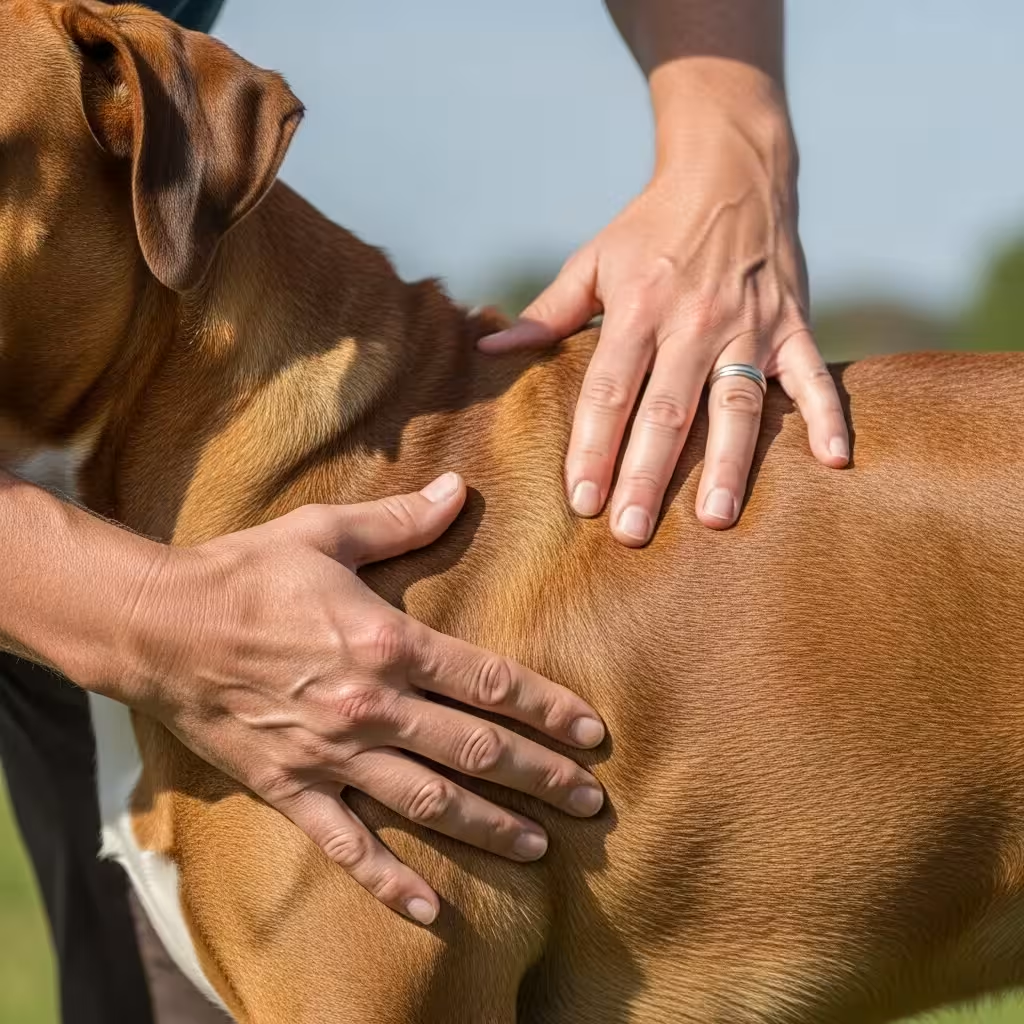
Proactive Pet Care: The Foundation of Health for Any Large Dog
Regardless of which breed you choose, your actions as an owner are the most powerful tool for ensuring a long and healthy life for your dog. A “healthy breed” is only a starting point; daily care and proactive prevention are what truly make the difference.
Weight Management and the Body Condition Score (BCS)
The single most common preventable health issue in dogs today is obesity. Excess weight puts immense strain on a large dog’s joints, increasing the risk and severity of arthritis and hip dysplasia. It also taxes their heart and other organs. Learn to assess your dog’s Body Condition Score (BCS). You should be able to easily feel their ribs with light pressure, and they should have a visible “waist” when viewed from above. Ask your veterinarian to show you how to assess your dog’s BCS at your next visit.
Worked Mini-Example: A Weekly Enrichment & Care Plan
This plan integrates physical exercise, mental work, and routine care to keep a large dog healthy and happy.
Monday: 60-minute brisk walk or jog. 15 minutes of trick training before dinner.
Tuesday: 45-minute game of fetch at a fenced park. Evening meal served in a puzzle feeder.
Wednesday: 30-minute “sniffari” walk, letting the dog lead and sniff everything. 10 minutes of cooperative care practice (handling paws, looking at ears).
Thursday: 60-minute hike on varied terrain. Check and wipe ears afterward.
Friday: Rest day with shorter walks. Brush teeth and perform a full-body check for lumps or scrapes. Trim nails if needed.
Saturday: A longer adventure like swimming or a trip to a dog-friendly beach.
Sunday: 30-minute walk and a relaxing afternoon with a long-lasting chew.
Joint Protection from Puppyhood
The first 18 months are critical for a large breed puppy’s skeletal development. To protect their growing joints, feed a high-quality, large-breed specific puppy food, which is formulated to promote a slow, steady growth rate. Avoid forced, repetitive exercise like long-distance jogging or excessive jumping on hard surfaces until they are fully mature.
Preventing Bloat (GDV)
Bloat is a swift and deadly emergency. All large dog owners must know the signs and prevention strategies. The American Veterinary Medical Association (AVMA) offers detailed guidance. Key signs include a swollen or hard abdomen, non-productive retching (trying to vomit but nothing comes up), restlessness, and pale gums. If you see these signs, it is a life-or-death emergency requiring immediate veterinary attention. To reduce risk, use slow-feeder bowls, feed smaller meals, and prevent exercise around mealtimes. Some owners opt for a preventative surgery called a prophylactic gastropexy, which tacks the stomach to the body wall. This is a procedure to discuss with your veterinarian.















